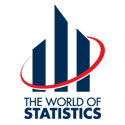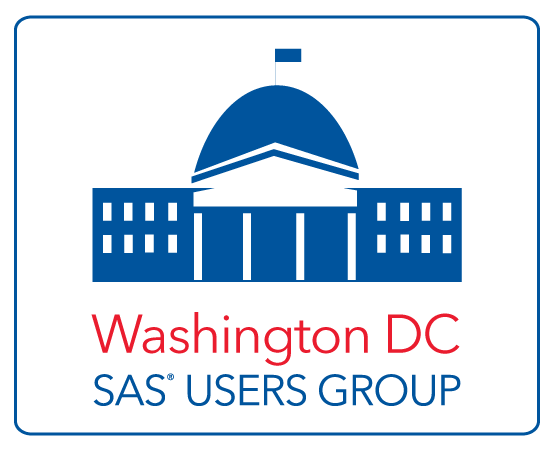January 2006
Contents:
- Nominations Sought for 2006 Julius Shiskin Award
- The Jeanne E. Griffith Mentoring Award
- Education Announcements:
- Employment Opportunities
- Email Delivery
- Note From The WSS NEWS Editor
- WSS People
- PDF Versions:
(Requires Adobe Acrobat Reader)
Newsletter
Area Meetings and Courses
Nominations Sought for 2006 Julius Shiskin Award
Nominations are invited for the annual Julius Shiskin Memorial Award for Economic Statistics. The Award is given in recognition of unusually original and important contributions in the development of economic statistics or in the use of statistics in interpreting the economy. Contributions are recognized for statistical research, development of statistical tools, application of information technology techniques, use of economic statistical programs, management of statistical programs, or developing public understanding of measurement issues. The Award was established in 1980 by the Washington Statistical Society (WSS) and is now cosponsored by the WSS, the National Association for Business Economics, and the Business and Economics Statistics Section of the American Statistical Association. The 2005 award recipient was Erwin Diewert, University of British Columbia, in recognition of his path-breaking economic theoretical innovations, notably in index number theory, which have been adapted to improve national economic statistics around the world.
Because the program was initiated many years ago, it is little wonder that statisticians and economists often ask, "Who was Julius Shiskin?" At the time of his death in 1978, "Julie" was the Commissioner of the Bureau of Labor Statistics (BLS) and earlier served as the Chief Statistician at the Office of Management and Budget (OMB), and the Chief Economic Statistician and Assistant Director of the Census Bureau. Throughout his career, he was known as an innovator. At Census he was instrumental in developing an electronic computer method for seasonal adjustment. In 1961, he published Signals of Recession and Recovery, which laid the groundwork for the calculation of monthly economic indicators, and he developed the monthly Census report Business Conditions Digest to disseminate them to the public. In 1969, he was appointed Chief Statistician at the Office of Management and Budget where he developed the policies and procedures that govern the release of key economic indicators (Statistical Policy Directive Number 3), and originated a Social Indicators report. In 1973, he was selected to head BLS where he was instrumental in preserving the integrity and independence of the BLS labor force data and directed the most comprehensive revision in the history of the Consumer Price Index (CPI), which included a new CPI for all urban consumers.
Nominations for the 2006 award are now being accepted. Individuals or groups in the public or private sector from any country can be nominated. The award will be presented with an honorarium of $750 plus additional recognition from the sponsors. A nomination form and a list of all previous recipients are available on the ASA Website at (www.amstat.org/sections/bus_econ/shiskin.html) or by writing to the Julius Shiskin Award Committee, Attn: Monica Clark, American Statistical Association, 1429 Duke Street, Alexandria, VA 22314-3402. Completed nominations must be received by April 1, 2006. For further information contact Rich Allen, Julius Shiskin Award Committee Secretary, at (reisepaar2@earthlink.net).
Return to topThe Jeanne E. Griffith Mentoring Award
On receiving the Roger Herriot Award in June 2001, Jeanne E. Griffith said:
One of the most rewarding aspects (of Federal statistics) for me was the opportunity to promote creative activities and energies among my staff When I have had the blessing tomentor young people in their careers, I have tried to emphasize (that) only they, themselves, can make the most of the chances that life presents.
Dr. Griffith died in August 2001 after working for more than 25 years in the Federal statistical system. Throughout her career,and especially in her latter senior management positions at the National Center for Education Statistics and the NationalScience Foundation, one of Jeanne's highest priorities was tomentor and encourage younger staff at all levels to learn, togrow, and to recognize and seize career opportunities as they came along.
The Jeanne E. Griffith Mentoring Award has been established toencourage mentoring of younger staff in the Federal statistical system. It is presented annually, beginning in 2003, to a supervisor who is nominated by co-workers and supervisors, and chosen by the Award Selection Committee.
The award is co-sponsored by the Interagency Council on Statistical Policy, the Council for Excellence in Government,the Washington Statistical Society, the Social Statistics and Government Statistics Sections of the American Statistical Association, and the Council of Professional Associations on Federal Statistics.
Nominations for 2006 will be accepted beginning in February 2006. The last date for submission of nominations is March 31, 2006, and the Award Committee will make its determination of theaward winner by May 1, 2006. The award will consist of a $1000 honorarium and a citation, which will be presented at a ceremony arranged by the co-sponsors in June 2006.
The winning mentor will be selected for his or her efforts insupporting the work and developing the careers of younger staff.Examples of typical mentoring activities include:
- Advising junior staff to help them create career opportunities, networking skills, and contacts for growth and development;
- Counseling junior staff and providing resources to help develop their technical writing, analysis, presentation and organizational skills and knowledge;
- Encouraging junior staff growth and career development through attendance and oral presentations at meetings with higher level officials, staffs of other agencies, professional associations, training courses, and conferences;
- Motivating junior staff and building self confidence through feedback on their efforts, being a listener when that is needed, and creating a caring and supportive environment;
- Serving as a role model for junior staff through professional expertise, information and insights, balancing collegial and personal roles, and including everyone across rank, race, ethnicity, and seniority.
For further information on the award, contact Ed Spar, Council of Professional Associations on Federal Statistics (COPAFS) by phone: 703-836-0404; fax: 703-684-3410; or by e-mail at copafs@aol.com. The nomination cover sheet and guidelines form-or a photocopy of it-should be attached to a nomination memorandum or letter. Forms can be obtained by contacting Ed Spar, or by downloading from the COPAFS website at http://www.copafs.org. All nominations should be returned to the Jeanne E. Griffith Mentoring Award Committee, c/o COPAFS, 1429 Duke Street, Alexandria, VA 22314 no later than March 31, 2006.
Return to topSIGSTAT Topics for December 2005 to May 2006
January 18, 2006: SAS PROC QUANTREG
The QUANTREG procedure models the effects of covariates on the conditional quantiles of a response variable by means of a quantile regression. Ordinary least-squares (OLS) regression models the relationship between one or more covariates X and the conditional mean of the response variable Y given X=x. Quantile regression extends the regression model to conditional quantiles of the response variable, such as the median or 90th percentile. Charlie Hallahan will be the speaker.
February 8, 2006: SAS PROC ENTROPY
The ENTROPY procedure implements a parametric method of linear estimation based on Generalized Maximum entropy. The ENTROPY procedure is suitable when there are outliers in the data and robustness is required, or when the model is ill-posed or undetermined for the observed data, or for regressions involving small data sets. Charlie Hallahan will be the speaker.
March 15, 2006: SAS PROC GLIMMIX
The GLIMMIX procedure fits statistical models to data with correlations or nonconstant variability and where the response is not necessarily normally distributed. These models are known as generalized linear mixed models (GLMM). The GLMMs, like linear mixed models, assume normal (Gaussian) random effects. Conditional on these random effects, data can have any distribution in the exponential family. In the absence of random effects, the GLIMMIX procedure fits generalized linear models (fit by the GENMOD procedure). Charlie Hallahan will be the speaker.
SIGSTAT is the Special Interest Group in Statistics for the CPCUG, the Capital PC User Group, and WINFORMS, the Washington Institute for Operations Research Service and Management Science.
All meetings are in Room S3031 (Food Safety and Nutrition Room), 1800 M St, NW from 12:30 to 1:30. Enter the South Tower and take the elevator to the 3rd floor to check in at the guard's desk.
Apri 19, 2006: Introduction to SAS Enterprise Guide 4.1 for Statistical Analysis
The demo begins with a quick tour through the layout of Enterprise Guide (EG) as a menu-based interface to SAS procedures.Ê Emphasis in this workshop will be on the statistical capabilities of EG.Ê In particular, a set of data (put together using enhanced features of the query builder task) will serve as a case study for a forecasting exercise. The demo will show how code generated by EG can be customized, stored, and rerun, and custom reports saved with new Report Controls Integration.
Linda Atkinson and Charlie Hallahan will be the speakers.
May 17, 2006: Univariate Detrending Using SAS: Some Examples and Applications
Detrending or filtering is an important tool for the macroeconomist studying business cycle fluctuations. Business cycles can be thought of as deviations of output from its trend. As such, detrending or filtering allows us to focus on the 'cyclical' properties of output. Four methods of detrending using SAS will presented: Beveridge-Nelson decomposition, Hodrick-Prescott filter, Baxter-King filter, and Unobserved Components. Two applications of univariate detrending are also presented. The first is to use SAS to generate 'stylized facts' of the business cycle and the second is to examine the consequences of detrending on the effects of monetary policy on output.
Ban Cheah, Westat, will be the speaker.
SIGSTAT is the Special Interest Group in Statistics for the CPCUG, the Capital PC User Group, and WINFORMS, the Washington Institute for Operations Research Service and Management Science.
All meetings are in Room S3031, 1800 M St, NW from 12:00 to 1:00 (note new time). Enter the South Tower & take the elevator to the 3rd floor to check in at the guard's desk.
First-time attendees should contact Charlie Hallahan, 202-694-5051, hallahan@ers.usda.gov and leave their name. Directions to the building and many links of statistical interest can be found at the SIGSTAT website, www.cpcug.org/user/sigstat/
Return to topEmail Delivery
If you did not receive this issue electronically and you have not notified us that you wish to receive the newsletter in hardcopy, please send your preferred email address to svm@mitre.org and indicate that this is your address for the WSS newsletter. To continue to receive the newsletter in hard copy, contact the WSS secretary at courtney.nreiser@census.gov or (301) 763-4142.
Return to topNote From The WSS NEWS Editor
Items for publication in the March issue of the WSS NEWS should be submitted no later than January 31, 2006. E-mail items to Michael Feil at michael.feil@usda.gov.
Return to topClick here to see the WSS Board Listing (pdf)
Return to top






